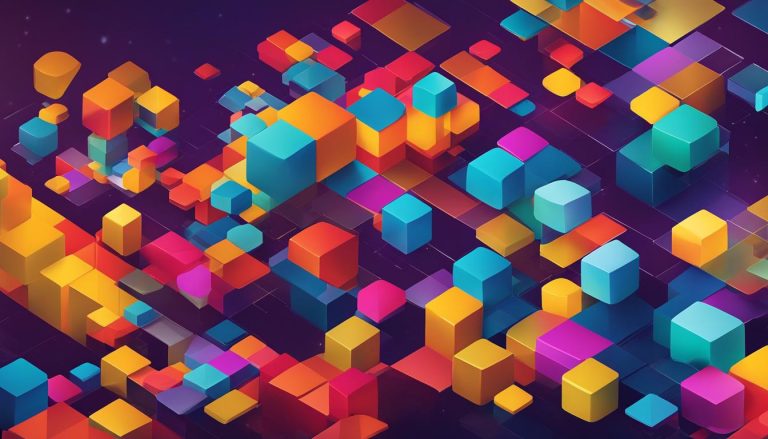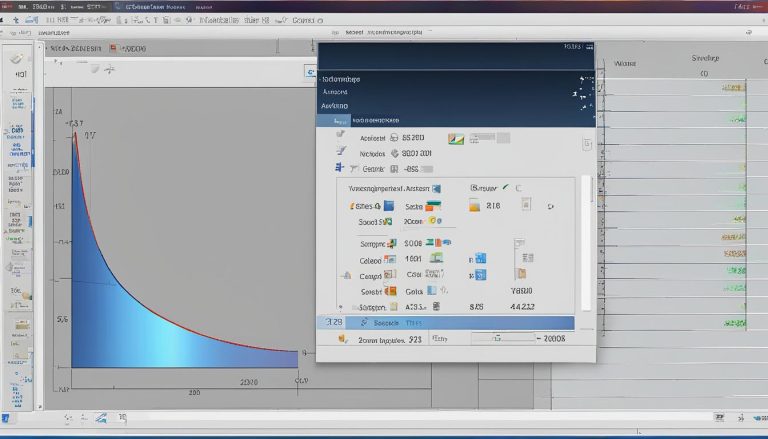Have you ever heard of a digital twin? In today’s rapidly evolving technological landscape, this concept has been gaining significant attention. So, what exactly is a digital twin and why is it important?
A digital twin is a virtual representation of an object or system that is created to mirror its real-life counterpart. It goes beyond a simple simulation by incorporating real-time data, machine learning, and reasoning to provide valuable insights for decision-making. With sensors collecting data from the physical object, the digital twin is continuously updated, allowing for simulations, performance analysis, and potential improvements.
Key Takeaways:
- A digital twin is a virtual representation of a physical object or system.
- It utilizes real-time data, machine learning, and reasoning to provide insights for decision-making.
- Digital twins have various types, including component twins, asset twins, system or unit twins, and process twins.
- The concept of digital twins originated in 1991 and has been used in NASA’s space exploration missions in the 1960s.
- Digital twins offer advantages such as better research and design, greater efficiency, and insights for product end-of-life decisions.
How Does a Digital Twin Work?
A digital twin works by creating a digital replica of a physical asset in a virtual environment. It utilizes sensors to collect real-time data from the physical object, which is then transmitted to a software platform. This data is used to update the digital twin, allowing for simulations, optimizations, and analysis of the asset’s behavior.
Digital twins provide several benefits, including the reduction in time to market through rapid iterations and optimizations of product designs. They also improve product quality by identifying design flaws early in the manufacturing process. Digital twins can be used for environmental sustainability efforts by reducing material usage and improving traceability.
To build a digital twin, organizations need a high-quality data infrastructure for reliable data collection and analysis. The process involves creating a blueprint, building the base digital twin, and boosting its capabilities. The journey from a digital twin to an enterprise metaverse involves creating interconnected digital twins to simulate complex relationships and generate richer behavior insights.
Benefits of Digital Twins
- Improved Product Design: Digital twins allow for rapid iterations and optimizations, reducing the time to market and improving product quality.
- Environmental Sustainability: By reducing material usage and improving traceability, digital twins contribute to sustainable manufacturing practices.
- Real-time Monitoring and Optimization: Digital twins enable organizations to monitor assets in real-time and optimize their performance for maximum efficiency.
- Insights for Decision-making: The data collected from digital twins provides valuable insights for informed decision-making and process improvements.
Overall, digital twins revolutionize the way organizations design, operate, and optimize physical assets. By leveraging real-time data and simulation capabilities, digital twins offer numerous benefits across industries such as manufacturing, healthcare, and urban planning.
Digital Twins vs. Simulations
When it comes to virtual models, digital twins and simulations are often mentioned together. However, there are distinct differences between the two. Simulations are focused on studying specific processes, while digital twins provide a comprehensive virtual environment that can run multiple simulations and analyze a wide range of issues.
Digital twins stand out with their ability to utilize real-time data, enabling a continuous flow of information between the physical object and its virtual counterpart. This two-way communication allows for better insights and the potential for product and process improvements. Implementing digital twins requires a digital maturity that includes a reliable data infrastructure and the necessary talent.
Digital twins find significant application in IoT (Internet of Things) environments. In these connected ecosystems, devices provide real-time data that can be utilized by digital twins for analysis, optimization, and decision-making. The combination of IoT and digital twins opens up new possibilities for industries, enabling them to harness the power of real-time data and generate valuable insights.
Key Differences Between Digital Twins and Simulations:
- Digital twins provide a virtual environment for running multiple simulations, while simulations focus on specific processes.
- Digital twins utilize real-time data, enabling a continuous flow of information, whereas simulations are typically based on predetermined inputs.
- Implementing digital twins requires a digital maturity that includes reliable data infrastructure and talent, while simulations can be implemented with simpler data sets.
- Digital twins find strong application in IoT environments, leveraging real-time data from connected devices, while simulations can be used in a broader range of environments.
By understanding the differences between digital twins and simulations, organizations can make informed decisions about leveraging these technologies to improve their operations and drive innovation.
Advantages and Applications of Digital Twins
Digital twins offer numerous advantages across a wide range of industries. By providing insights into likely performance outcomes and allowing for product refinements before production, digital twins enhance research and development efforts. Additionally, these virtual replicas improve efficiency by monitoring and optimizing production systems in real-time. They also play a crucial role in making product end-of-life decisions by determining the most suitable final processing methods.
In the manufacturing sector, digital twins streamline process efficiency and optimize performance. By simulating different scenarios, manufacturers can identify potential bottlenecks and implement improvements. Digital twins also find extensive applications in healthcare, where they help track patient health indicators and generate key insights for personalized treatment plans. This technology empowers healthcare professionals to optimize patient care and make informed decisions.
Let’s explore some real-world examples of digital twin implementation:
1. Digital Twin in Manufacturing: Companies like General Electric and Siemens utilize digital twin technology to optimize their manufacturing processes. By creating virtual representations of their factories and production lines, these companies can simulate different scenarios, identify inefficiencies, and implement improvements that lead to enhanced productivity and cost savings.
2. Digital Twin in Healthcare: The healthcare industry is leveraging digital twins to revolutionize patient care. For instance, in the field of orthopedics, digital twins can be created to simulate surgeries and predict outcomes, helping surgeons plan and execute procedures with greater precision. Digital twins also play a crucial role in monitoring patients’ vital signs, allowing healthcare professionals to detect anomalies and intervene when necessary.
3. Digital Twin Use Cases: Digital twins have been utilized in various other applications as well. For instance, in the automotive industry, digital twins enable manufacturers to optimize their designs, improve fuel efficiency, and enhance overall performance. Digital twins are also employed in urban planning, where they provide real-time spatial data for infrastructure development and augmented reality systems.
These examples highlight the versatility and potential impact of digital twins across different sectors. As organizations continue to explore and invest in digital twin technology, we can expect even more innovative applications in the future.
Table: Examples of Digital Twin Implementation
| Industry | Application |
|---|---|
| Manufacturing | Optimizing production processes and enhancing efficiency |
| Healthcare | Simulating surgeries, monitoring patient health indicators |
| Automotive | Design optimization, improving fuel efficiency |
| Urban Planning | Providing real-time spatial data for infrastructure development |
Conclusion
The digital twin market is experiencing significant growth and is projected to reach a value of USD 73.5 billion by 2027. This technology is gaining traction across various industries as organizations recognize its potential for driving innovation and optimization.
Looking ahead, the future of digital twins is highly promising. Advancements in AI and machine learning are continuously enhancing the capabilities of digital twins, allowing for better decision-making and operational efficiency. As cognitive power increases, digital twins have the potential to revolutionize asset-intensive industries by providing a comprehensive view of physical assets and processes.
As organizations continue to build their digital twin networks and move towards an enterprise metaverse, they can unlock even greater value and insights. The possibilities offered by digital twins are vast, and their impact on industries and operations is expected to grow exponentially in the coming years.
Stay ahead of the curve and explore the potential of digital twin technology. Embrace its power to transform your industry and unlock new opportunities for growth and optimization.
FAQ
What is a digital twin?
A digital twin is a virtual representation of an object or system that spans its lifecycle, is updated from real-time data, and uses simulation, machine learning, and reasoning to aid in decision-making.
How does a digital twin work?
A digital twin works by creating a digital replica of a physical asset in a virtual environment. It utilizes sensors to collect real-time data from the physical object, which is then transmitted to a software platform. This data is used to update the digital twin, allowing for simulations, optimizations, and analysis of the asset’s behavior.
What are the advantages and applications of digital twins?
Digital twins offer several advantages and find applications in diverse industries. They enable better research and development, improve efficiency, aid in product end-of-life decisions, streamline manufacturing processes, track patient health indicators in healthcare, and provide real-time spatial data in urban planning, among other applications.
What is the difference between digital twins and simulations?
While digital twins and simulations both utilize virtual models, digital twins provide a virtual environment that can run multiple simulations and study a wide range of issues. Digital twins utilize real-time data, enabling better insights and the potential for improving products and processes.
What is the future of digital twins?
The digital twin market is projected to reach USD 73.5 billion by 2027, and organizations across various industries are exploring and investing in digital twin technology. As cognitive power and advancements in AI and machine learning continue to enhance their capabilities, digital twins have the potential to fundamentally change operating models in asset-intensive industries and provide integrated views of assets and processes.
Jana is a public relations specialist and writes about all kinds of software products that make our life easier.


